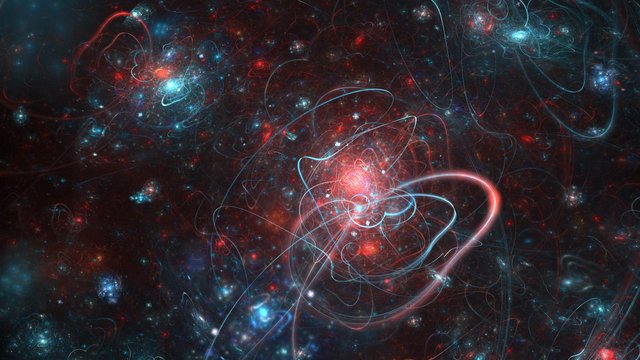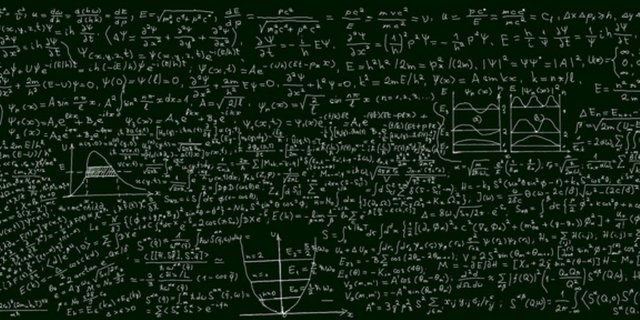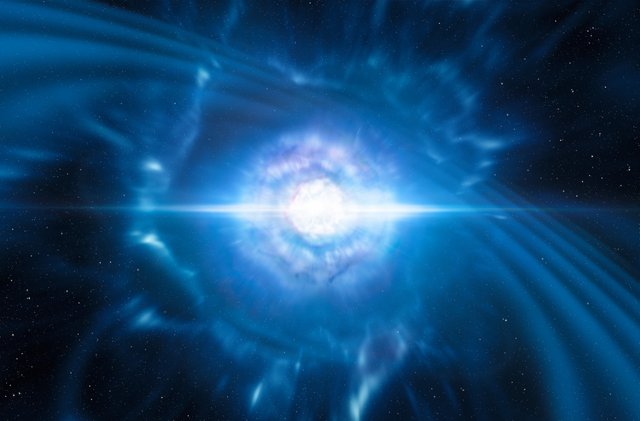The Theory of Everything: Introduction to String Theory (FOR BEGINNERS!) - Part 1/2
The World around us is truly a fascinating work of art. For centuries, humans have been trying to devise a story to explain everything. The problem with this, is the deeper we delve into explaining something in Science, the more complicated explaining becomes, and the more problems we encounter, that may disprove the story altogether. String Theory is a good shot at being a valid theory of everything. It is an incredibly difficult theory to grasp, but nevertheless, I shall do my best to explain it such that anyone reading this article is able to understand.

The Nature of Everything
To understand the true nature of reality, we looked at ‘things’ closer and closer to work out what a ‘thing’ is made of. The more we looked, the more we were amazed. From what may have appeared to be just a ‘thing’; zooming in resulted in seeing amazing landscapes we would never have thought we would see. From a mattress, to its bed bugs, to the cells making them up, to the complex molecular configurations making up these cells, to what we once thought was the most fundamental building block of everything; atoms. What led us to discover that they were not the fundamental building blocks, was the act of forcing of these atoms to be smashed together, very hard [1]. As a result, this produced a cocktail of even more fundamental ‘things’, called elementary particles - but why stop there?
The Basis of Quantum Physics
Seeing is believing. When we see something, we know it is there, because we can see it, right? Seeing is not a problem for most things around us, i.e. we can see macroscopic objects, such as friends and family, and microscopic objects, such as cells and bacteria, but when we start to look at even smaller things, we have an issue.
How do we see
To see an object, electromagnetic radiation, i.e. light, must interact with it and bounce off, into our eyes – our eyes then pass on this signal to our brain, which then converts this signal into an image of this object, which we make sense of [2]. When we reach super-small sizes, such as the size of an atom, we encounter a problem. Light is ‘too big’ to interact at such a small level so it simply passes through unaffected. We can try to solve this problem by shortening the wavelength of light passing through, such that it is ‘small enough’ to interact with these atomic level particles, but smaller wavelengths of light, means the light has more energy. Passing high energy light through tiny particles alters them, which means we simply just cannot see elementary particles. This consequently means that we cannot measure them precisely. This principle is so important, that it has been given a name; the Heisenberg Uncertainty Principle, the basis of all Quantum Physics [3].

The Point Particle
Having said all the above, what does a particle look like? What is its nature? The answer is, we don’t know. If we tried really hard, all we would see is a blurry sphere of influence, in which the particle, or atom, acts, but again, not the actual particle itself. We just know they exist. To do any Science with these particles, humans devised a new story that they can use to explain the unknown; the Point Particle [4]. The Point Particle theory suggests that any particle is in a defined point in Space. This theory solved many problems as particles and their interactions can now be calculated and measured, due to them having a definitive point in Space. The field of Physics this maths lies in, is Quantum Field Theory; it has helped Science advance so much. In fact, the standard model of Particle Physics is built on it. The problem with this theory is that it is highly inaccurate; to be precise, it is 0.0000000000002% accurate [5]. This inaccuracy is due to particles not actually being ‘point particles’, but modelling them as point particles paints us a pretty good picture of the Universe around us. You may ask, if this theory is so inaccurate, why use it in the first place? Well, not only has it helped Science advance so much, but there are real life applications, even today, from the use of this Physics, such as Maglev trains [6].

The Fundamental Forces of the Universe
The Point Particle theory raises a considerable problem, that is, Gravity. See, the world is based off interactions; 4 to be precise: 1) The Strong interaction, 2) The Weak interaction, 3) The Electromagnetic interaction and 4) Gravity [7]. In Quantum Physics, the strong, weak and electromagnetic interactions (1-3) are carried by certain particles; i.e. elementary particles allow for these interactions to happen. Notice how Quantum Physics explains this. The thing is, it does not explain number 4; Gravity. Einstein’s General Relativity is a theory of the geometry of Space and Time, that explains Gravity. All you need to know is that in General Relativity, we need to know distances to an absolute precision for it to work. Since there is no way of measuring things to an absolute precision in Quantum Physics, as mentioned above, this raises a huge problem; the theory of Gravity does not work with the theory of Quantum Physics, therefore, we still do not have a theory of everything!

Conclusion to Part 1
As explained above, we still do not have a theory of everything, as we cannot explain… everything, with a theory. Instead of having one big completed puzzle, we have sections of a completed puzzle that cannot yet be joined up, to make this one big puzzle. String Theory is an attempt to put all these pieces together and gives an alternative solution to become a valid ‘theory of everything’. This is what I will be talking about in Part 2.
If you have any questions, leave them below and until next time, take care.
~ Mystifact
References:
[1]: https://www.livescience.com/19517
[2]: http://www.physicsclassroom.com/class/refln
[3]: http://hyperphysics.phy-astr.gsu.edu/hbase/uncer.html
[4]: https://en.wikipedia.org/wiki/Point_particle
[5]: https://www.youtube.com/watch?v=Da-2h2B4faU
[6]: https://www.energy.gov/articles/how-maglev-works
[7]: https://www.clearias.com/four-fundamental-forces-of-nature
Please note; no copyright infringement is intended. All images used have been labelled for re-use on Google Images. If any artist or designer has any issues with any of the content used in this article, please don’t hesitate to contact me to correct the issue.
Relevant articles:
What is Matter?
Will Teleportation Ever Be Possible?
What is Dark Matter and Dark Energy?
Previous articles:
DTube #1: What Is Light Made Of?
You Can Develop Unlimited Senses!
The Philosophy of Physics: What is Space? – Episode 2
Follow me on: Facebook, Twitter and Instagram, and be sure to subscribe to my website!
Being A SteemStem Member
This post has received gratitude of 5.87% from @appreciator courtesy of @mystifact!
Sneaky Ninja Attack! You have been defended with a 10.42% vote... I was summoned by @mystifact! I have done their bidding and now I will vanish...Whoosh